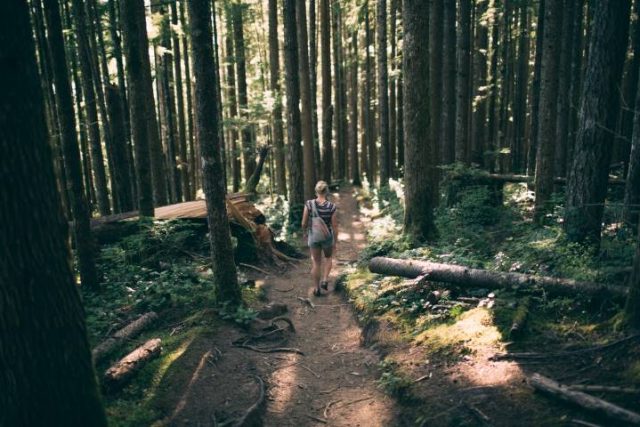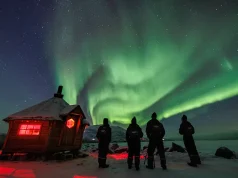
There is nothing quite like exploring the great outdoors other than a refreshing hike. But as refreshing and invigorating a hike is, it does come with risks as well.
Whether you are an avid hiker or this will be your first time, many things can happen unexpectedly. And risks can double if you are out in the wild.
Fortunately, there are several ways of decreasing the odds of encountering an emergency while you are out hiking. This includes appropriately equipping you on how you can deal with these situations.
In this post, we have listed nine safety tips that you should go by on your next hiking trip:
1. Don’t go alone
The last thing you wanted to happen is to be stranded alone, leaving you in a dire situation. That’s why it always helps that you have at least one companion that can get help.
You can discuss a couple of essential things with them before you set out. You can talk about how strenuous the hike is, what your general itinerary looks like and if you have a backup emergency plan.
2. Bring your map
Bringing a map with you is vital to all the safety tips we’ve mentioned in this article. You shouldn’t rely exclusively on GPS technology, especially if there’s a limited signal in the area.
It makes sense that you always bring a map with you. If you don’t know how to read and navigate using a map, take some time to learn this beforehand.
3. Pick the right gear
Make sure that you also only choose high-quality hiking gear. This includes a trekking pole, rain jacket, compass, flashlight, and more.
If you’re in the wilderness, you would not want your hiking gear to give up on you. You don’t want to have that uh-oh moment when you realize that you forgot to bring something important with you. The right multi-tool is an essential hiking companion. Small enough to fit in your pocket, it can be used in a pinch to fix gear, start a fire, and get you through all kinds of emergency situations.
If you’re not confident about your stamina and hiking skills, like roping and carving, you need to practice this beforehand. Doing so ensures that you can figure out what you can do in case you encounter a hiccup during your trip.
4. Study the area
Exploring new hiking trails can be thrilling. However, it also means that you’re unfamiliar with the area. So, before you leave, make sure that you check regional hiking information for the following:
- Local wildlife in the area and what you need to do once you encounter one
- Local poisonous plants in the area
- Local hunting seasons or regions.
- Any hiking alerts
You’ll mostly find this essential information on government websites, from the locals, and hiking groups.
5. Know your limits
It’s also crucial that you understand your physical fitness and experience to make your hike more enjoyable and safe overall.
This lets you know the trail’s distance, elevation gain, and intensity levels you need to pick before setting out on your hike.
Apart from that, you’ll know what particular trail conditions you wanted to avoid so that you’ll see whether it will be a good idea to turn back.
6. Bring water and food
If you’re not well-hydrated, you can be prone to altitude sickness or hypothermia.
To keep yourself hydrated and energized, you should pack light snacks, transportable meals, and water. This prevents you from being exhausted or from fainting.
It would also help if you also considered bringing ample food with you since you don’t know whether or not you’ll be out longer than expected. It’s always best to be prepared.
Consider bringing dried meat, dried fruits, nuts, hard-boiled eggs, and power bars during your trip.
7. Plan your hikes during the day
Plan your hike during the day as much as possible. That’s because it’s pretty easy to be lost in the dark, and the area you might be hiking may be home to several wild animals that might come out during the night.
To avoid getting stuck out in the dark, set a turnaround time. No matter how far you hike, see to it that you have a predetermined time to finish your hike before the sun comes setting down.
8. Check the weather
This goes beyond checking what’s the weather during your hike. It would be best to talk with park rangers or park sites beforehand to know what inclement weather events happen during this time of the year.
Even with a great weather forecast, there’s still a possibility that a big storm will come unexpectedly.
The most common dangers that you might encounter are thunder and lightning. If you get caught with them, make sure that you seek out the nearest shelter, and if one person in your group is struck, you should spread out.
Although it might seem unlikely, it helps that you’re prepared for these kinds of scenarios. Also, try to avoid high and open locations during this time (fields, boulders) and tall objects such as trees, metals, and bodies of water.
Even having the littlest changes in weather can make your trip risky since they impact the terrain. For instance, light rain that might occur when you’re climbing the peak could make the whole trip back pretty risky.
9. Dress appropriately
Choosing suitable clothing for your hike can also make a huge difference in your overall comfort—even your safety when you’re hiking.
This is especially true if you’re encountering unexpected changes in the weather or in case you get injured or lost while hiking a trail. The key here is choosing light layers of clothing, which you can quickly shed or add as you go.
Over to You
A lot of unexpected things can happen to you during your hike. Hence, you should always make sure that you come well-prepared.
You can do that by keeping these safety precautions in mind:
- Don’t go alone
- Bring your map
- Pick the right gear
- Study the area
- Know your limits
- Bring water and food
- Plan your hikes during the day
- Check the weather
- Dress appropriately
Following the hiking tips listed above will ensure your safety and survival while you are on the trail. Good luck and happy hiking!





